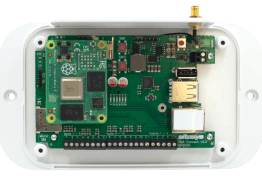
- Digital transformation
How open ecosystems support both security and smart building management
The line between building management and physical security is blurred. Increasingly, facility managers, security integrators, and monitoring centers are expected to oversee more than just intrusion or access events. They also handle energy data, HVAC alerts, environmental sensors, and occupancy metrics.
An open ecosystem (where systems, devices, and platforms can interconnect without vendor lock-in) is no longer a technical luxury. It’s a business requirement for efficiency, scalability, and context-rich decision-making.
Interoperability fuels real-time response
Open ecosystems create a shared language between systems. When fire alarms, intrusion detection, lighting, and HVAC talk to each other, operators gain situational clarity without switching platforms or guessing context.
For example, if an intrusion alarm is triggered and a temperature sensor in the same zone reports a sudden drop, the platform can correlate both inputs to detect a forced door entry. That insight allows faster, more informed responses.
In another case, lights and HVAC systems can shut down automatically during a fire alarm, reducing risk while supporting safety protocols. These kinds of interactions only happen when interoperability is built in.
Centralized monitoring reduces complexity
The reality for most operations teams is that they manage too many systems in parallel. A video platform here, a fire system there, and access control in a separate silo. Open platforms consolidate these tools into a unified view without compromising specialist features.
Operators benefit from monitoring all systems from a single interface. That means fewer screens to manage, fewer tools to train on, and faster time to action. For example, during a critical event, a lockdown can be triggered while elevators are disabled, and alerts are pushed to the maintenance team, all from one command center. Centralization simplifies operations while giving teams more time to focus on decisions rather than navigation.
Data becomes a strategic asset
Open ecosystems unlock the potential of data that often goes unused. Security platforms hold logs, alarm data, and video archives. Building systems track occupancy, energy usage, and air quality. Separately, they’re useful. Together, they’re powerful.
By analyzing cross-system patterns, security managers can detect the causes behind frequent false alarms or discover that certain access zones are underused. Facility managers can link badge access data to cleaning schedules or adjust lighting based on occupancy trends.
The insight isn’t in collecting more data—it’s in connecting it. Open ecosystems provide the infrastructure to do just that.
Automation drives consistency and speed
Manual responses are slow and inconsistent. Open platforms let you build rule-based workflows that adapt to your environment, without depending on vendor-specific logic.
Say a camera detects movement in a restricted area at night. If no badge swipe is logged nearby, the system can instantly alert a supervisor, launch a video pop-up, and document the event in real time. In smart building contexts, ventilation and lighting can adjust automatically based on occupancy, reducing energy waste without human intervention.
With the right integration backbone, automation becomes both scalable and manageable. You define the rules—your ecosystem enforces them.
Future-proofing through modularity
Technology evolves fast, and open ecosystems are designed to adapt. Whether adding new analytics tools, deploying IoT sensors, or upgrading legacy equipment, open standards ensure you don’t have to rebuild from scratch every time.
Teams gain flexibility to test new features in pilot zones, integrate niche tools, or swap vendors without overhauling core infrastructure. This means lower switching costs and higher resilience as technologies shift.
For growing operations or distributed portfolios, flexibility is essential.
Better alignment across teams
Security professionals, facility managers, IT teams, and compliance officers all have their own tools and goals. Open ecosystems offer a common foundation on which all teams can collaborate without friction.
IT can rely on secure APIs and centralized access control. Compliance gets full audit trails that track every event across every system. Security and facilities can build shared dashboards, pulling from the same data to meet different needs.
When systems are open, teams align around shared context instead of working in isolation. That drives better decisions, faster execution, and fewer blind spots.
Final takeaway
Open ecosystems break down silos between physical security and smart building systems. Connecting data, workflows, and teams on a shared foundation helps organizations work smarter, not harder. The future isn’t one system replacing another; it’s systems working together in ways that make everyone more effective.


